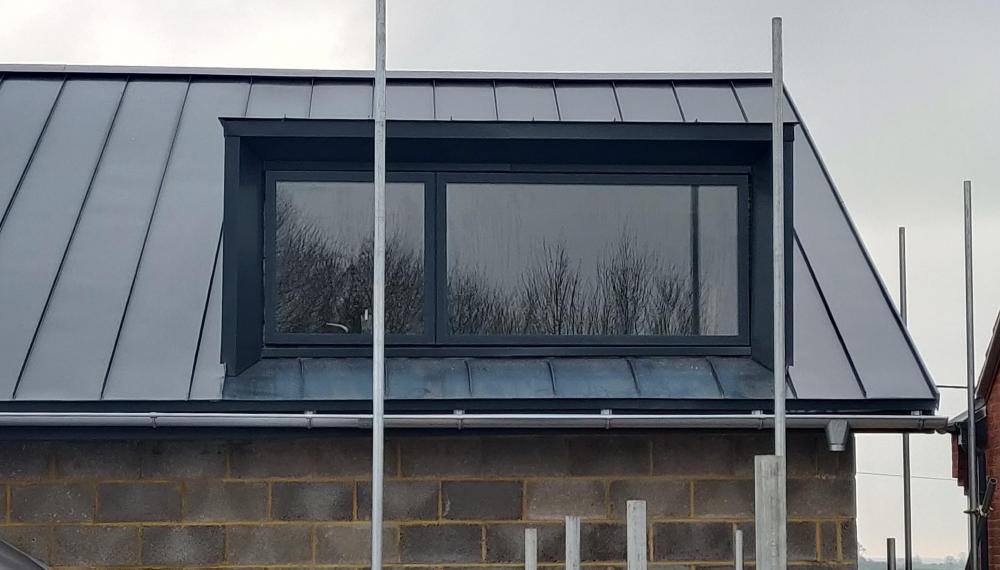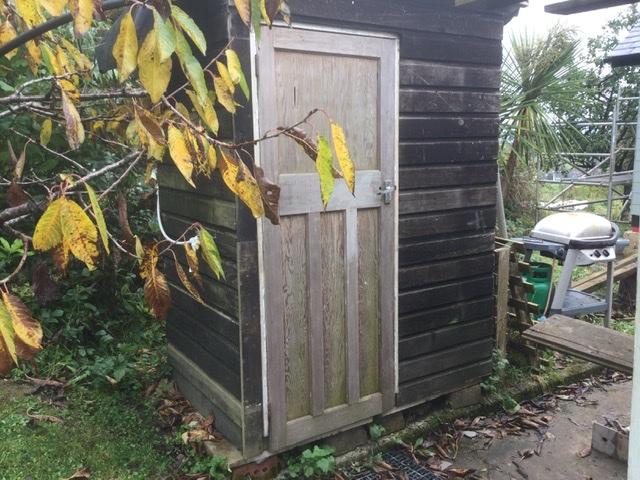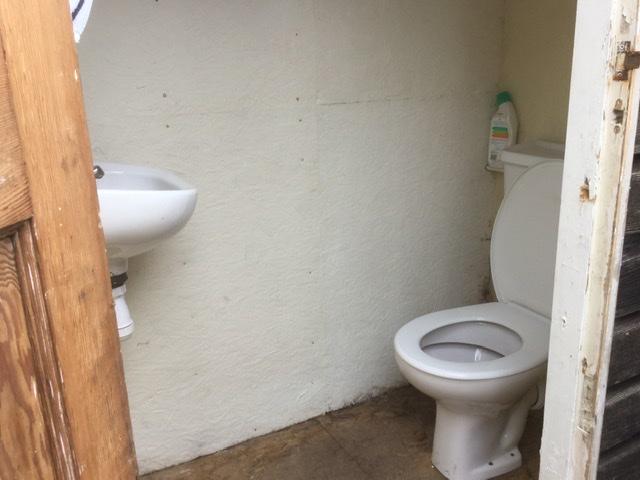Leaderboard
Popular Content
Showing content with the highest reputation on 03/09/21 in all areas
-
4 points
-
Oh Peter you have put me on the spot. Having a look at the section. Structurally big cantilever, more span than available back weight. That bit that is over hanging is much more than the main width of the four storey part. For all, think of it like a swing.. pivoted just to the right of the door. If all the building is the same weight it will probably want to tip over under it's own weight. But.. Peter. Could you Architecturally make the left hand side of the section heavy.. do this in brick / block, make the over hanging cantilever zinc external say.. not masonry.. say on a steel stud work, use a wriggly tin slab on the four storey bit.. you'll need a good floor thickness anyway for fire regs.. now you have ballast for the cantilever... for all, you now add a big weight to the short end of the swing so it won't fall over. It may be that you need to add a good mass to the left wall ( Trombe wall possibilty? ) using masonry..you will need a good bit though. The side elevation looks good.. not too many openings. This leads me to thinking about a simple steel braced frame that fabricators churn out every day.. easy to insulate and get priced up.. simple steel connections and so on. A simple design that you can easily attract tenders.. cost effective.. go for simple stupid. But in some ways this is good economic design... best to spend the money on Architectural features than heavy steels /piles you hide? One key would be to nail down the construction sequence so the thing does not fall down when you are putting it up. Provide enough back weight at all times so you go you don't need too design the left side piles as tension piles. Fine for a major client as tension piles ( still cost a bit more) are fine on occasion but as a self builder keep it simple / stupid and you'll get more tender options. I think it's just doable engineering wise for a domestic client at London prices, but.. they need to invest early to get a buildable design that leads the contractor by the hand. Do this and they may well get this in on or below budget. It's a must to get the Architect and SE working together from day one and in short order bring on board a trusted contactor who undestands the stability issues. That's my first go at this! and please excuse the spelling and grammer.3 points
-
Why..??? Never pay up front for anything ..! Site insurance is cheap - just get it in place and take the hit on a month or two. You should already have the site insured anyway.2 points
-
Lads, can you not disagree in a more instructive way? One of the ways I taught teachers to teach was to get them arguing for a concept with which they disagreed. Why don't you both try that? Much more interesting.2 points
-
1 point
-
If you go below 3.0 you will need a formal ventilation strategy. Page 19 here https://assets.publishing.service.gov.uk/government/uploads/system/uploads/attachment_data/file/468871/ADF_LOCKED.pdf1 point
-
You will pay all the VAT on materials at 20% and only able to do one claim at the end. Builder can claim monthly and zero rate the supply to you. Most lenders will loan on stage basis and assume no VAT so you need to find 20% extra each time yourself.1 point
-
1 point
-
It's more a case of they get a 5 and go sure that's not really much of a difference and convince you 5 is the result of hours of meticulous work. If you push for a 2 or 3 then your looking it done right and at the end of you score a 5 then that's a mile out. What type of build are you going for.1 point
-
1 point
-
So a hands on contracts manager for 10% of the build cost ? assuming the on line estimator is not under or over by a large % on each step and if you haven't the time to self manage or the skills to diy large parts of the build this could be a sensible option .1 point
-
You should be aiming much lower than a 4. It's not that hard to get that which means very little effort on their behalf.1 point
-
Are you sitting down? I received quotes of between £4000 and £7800 plus VAT labour only to install my windows. Up to 4 man team x 4 days. I know they wouldn't have done it without a crane and even then they'd have struggled around the back of the house. I had to build my own scaffold hoist contraption as no other lifting equipment I could get hold of would fit in the area. I did it all myself with some friends in the end.1 point
-
All will use subcontractors Up to roof and individual trades will work out cheaper than main contractor But you will need to know what you are looking at As individual trades won’t follow drawings unless they have to1 point
-
Whats more important to you ? Someone to manage the risk or cost . Would option D be on site every day during the build Managing the sub contractors or would he just slice the job up and book the trades meet on day one and give me a call when your done and I'll come.and check your work. Whats the difference in price between A and D .%.1 point
-
I enjoy technology, just don’t want everything in the house to act like an EMP has wiped everything when the WiFi goes down!1 point
-
Idealcombi official installers. The install seemed pricy for two days work £4000+ vat + crane but it seems to be the going rate. They have to come back to do trims and cloaks, which they may try to charge more for.1 point
-
Which figures are you using from Estimators Online? as there is already profit and contingencies build into the 'client' quote, make sure you aren't double counting.1 point
-
I run my range hob on 19kg bottles and they last forever ( I just can’t remember when I last had bottles delivered). Just been to look and one is empty ready fir changeover and the other nearly full!!,? I do have a spare (left over from the caravan days) so will wait till two need changing before arranging full ones.1 point
-
So their prices haven't moved since I first talked to them at Self Build Scotland show a couple of years ago. Basically £20 per square M for 100mm plus £1 for every extra 10mm.1 point
-
I have a 350mm I-beam timber frame with Icynene spray foam. It's very good for heat insulation and airtightness but it's not cheap and there's a lot of tidying up required afterwards. 130m2 floor area, two storey, and it was just under £10,000 for walls and roof about five years ago. I can look up the details if you're interested.1 point
-
Certification of any sort is a quality control process, i.e. a prescriptive means of meeting a particular standard. If you're a fully engaged, hands on self-builder who actually knows what they're doing, the value added is pretty limited - you've already driven the quality into the process and know it without someone else to tell you, and are free to chose your own trade-off between capital cost and energy consumption (15 kWh/m2/year isn't a hard number after all). If you're hands-off and relying on someone to do the work for you, it provides you with a valuable means by which you can ensure that your builder does what you are paying them to - although there are other ways and it may not be the most cost-effective. For volume housebuilders, some sort of audited external standard is probably the only way they're going to improve what they do - without it they'll end up continually salami-slicing the spec to save costs. Given our circumstances I think we're in group (2) and are quite likely to go for certification - we need some sort of external quality assurance, and PH is pretty close to what we want and is a relatively common standard is likely to be more cost-effective than some others.1 point
-
I think he is talking rubbish, unless he is looking at combustible materials above a cooker or appliance rather than the bottles1 point
-
I would ask him to show you the regulation that is concerning him. Is he worried about a leak, ignited, and a flame out the top of the cylinder?1 point
-
I have a simple DIY OSB cubicle on site sitting on a couple of pallets, knocked-up by one of my groundworkers, with white goods and a flexi to the nearest IC. Bucket for flushing. But I also have access to proper facilities next to the site.1 point
-
Why put it in the bottom, it will always be under water, fitting it at the high water mark keeps it up out of the water a lot of the time.1 point
-
Take some tablets to keep calm. They are the worst organisation I have dealt with.1 point
-
tank connector?? https://www.diy.com/departments/floplast-push-fit-straight-waste-tank-connector-dia-40mm/152672_BQ.prd1 point
-
Agree @Jack, we did the PHPP modelling to ensure that the whole performance was within passive standards and to quantify the space heating requirements plus overheating risk - as a result we specified external window blinds on the east and south aspects which massively reduced that risk. We then designed a built a passive standard basement (not that hard, lots of external insulation and inherently airtight concrete), entrusted the above ground fabric build to MBC (who contractually guarantee the airtightness) and used a passive certified window supplier and installer, same for front door. The follow on electric and plumbing trades were sensitive to the fabric and low energy requirement having worked on MBC before. Aside from that, the rest of the construction was standard. We did not use a passive certified MVHR. As I was the PM, I was effectively the supervisor but given that the majority of the detail was taken care of, it was mostly stopping anyone drilling a hole through a wall etc. Were we to have used traditional methods of construction and a main contractor, some amount of passive PM would have been required but would have increased the cost significantly. Our 'proof' is the completion of the fabric to design, the airtightness test, which came in at below the required 0.6 ACH. The low temp heating works as designed and is rarely used, energy bills are low (£1.15 electric (after FIT) and £1.20 gas daily for a close to 400m2 house). Occasional overheating from evening summer sun in the west but we did not build the bris soleil as specified. SAP is A rated. What you have described above is clearly not a credible passive build.1 point
-
1 point
-
Thanks for the reply Peter. I did have the loft tank changed for a new one with a lid and the vent pipe passed in through a tight hole. Better than the large open bowl thats sat in the loft for the 40 preceeding years! It was disgusting actually. Will keep the weekly cycle, actually it's quite useful on a Monday morning when everyone is late trying to get through the shower back-to-back to have more energy stored anyway.1 point
-
When I fitted my windows the cill was brick which protruded into the cavity a little, I simply (with the help of the builder for the large ones) lifted them onto this lip and propped it there whilst “jiggling” left and right to be central. It worked very well.1 point
-
1 point
-
You could try the bt forum, I got contacted by someone who moved things along when I posted there. IIRC you also get given an individual contact (& their email/phone no.) so get some consistency.1 point
-
Hi and welcome. Oxford is where i hail from, I spent the first 23 years of my life in Headington.1 point
-
Thanks, I will be building in the dreaming spires of Oxford, UK...1 point
-
What part of London. If you get that built for under £400,000 I will be very surprised.1 point
-
Hello Old kettle. I'll have a stab at this. You are correct in that a raft spreads the load, we have a gut feel for this, I think you are on the right track Old Kettle. Also as a general spec I think you are on the right lines give or take a bit. As a bit of background and starting from the most common. I touch on couple of points which I hope helps discussion. I see you mention a value of 3.0m depth for a strip found. This can be (the 3.0m is a clue for me) more related to building near trees, It's two different issues? See NHBC link below. Three metres, this is where you often get a big depth of a strip found when near trees as the roots play havoc with the soil moisture content in some types of ground (certain type of clay soils will shrink and swell for example by a few inches), the roots also grow larger, if you have a leaky drain, they will follow the nutriants you provide and grow accordingly! You can see the effect this has when you are out for a walk.. pavements near trees are often lifted up by the roots.. nature at work. https://nhbc-standards.co.uk/4-foundations/4-2-building-near-trees/ You may have silty gound, a thin layer of peat, maybe filled ground and so on. Here the SE will judge that it is cheeper to dig down to something solid, trench fill and build on top. That too can give a deep strip found depth, but often not 3.0m unless you have wide span ground beams and poor gound. Normally a strip found where there is no tree influence will be some 1.0 / 1.2 m to 0.45 m below ground level to the underside of formation. You can also find good info on this on the NHBC website, a legacy of their previous research. Old Kettle. I can see / hope / helps as it seems you are interested in this. Imagine you have strip found in a field on it's own. It loads the ground but as you go down in depth you have the weight of the soil above. This soil each side as you go down in depth acts to confine the pressure, hence when you look at the shear stress profile in the soil it's like a bulb shape, not the 45 - 60 deg principle you may see from a say lintel loading. But for a raft, or closely spaced piles the bulbs start to interact so the depth of the overall bulb goes further down, as each bulb interacts.. That is why rafts need a deeper depth of investigation which is not often discussed on BH. As an aside.. There are plenty of keen gardeners here on BH, who know that tree roots often don't go that deep. I have seen many cases like Old Kettle mentions of 3.0m.. but many designs follow the standard warranty provider safe / conservative standard guidance that is also adopted by BC as a fall back / standard position. Arboriculturists may not be the flavour from time to time on BH.. but a word with them on root depth could save you a fortune, and then a word in your SE's ear off the back of that? Old Kettle. I hope that I have covered some your points but have the odd doubt.The technical aspect of foundation design and how that interfaces with the super structure is not yet been fully explored on BH.1 point
-
1 point
-
Thanks everyone. I got the kit from Ultra LEDs and everything wired in really easy.1 point
-
Guilty as charged (no punn intended), im on with converting a Lotus Esprit after too many break downs, non starting, petrol leaks, gearbox problems, clutch problems etc etc. Im looking at it being a useful toy as opposed to an unreliable, temperamental garage weight1 point
-
I reckon your costings are about 100% out ... sounds harsh but you have a difficult site and finishing this for less than £1500/m is going to be a really tall order. Piles and steelwork are going to be easily double - what about services such as drainage and water ..?1 point
-
Fully intend to appeal and confident I'd win given how weak their objection is and easily disprovable it is. Just annoying what a waste of time it's going to be.1 point
-
Frankly that’s typical of houses of that age, if the wall has no major cracks it won’t be a problem. In some terraced houses they didn’t even brick the whole area and neighbours could walk into others lofts!!!1 point
-
Re UFH, you need to distinguish loops vs zones. Keep your individual loops as close to the same length as possible and < 100m. So we have 3 × ~100m loops (IIRC the shortest is 92m) all drawn off a 300m coil. 4 × 75m could have worked as well. Don't have any joins in your UF pipework below slab. The reason for the suggested 100m max is the head needed to get the necessary flow. I used the delta T across each zone to trim the flow rates and balance them, but once balanced, like @joe90 and @Pete, I run my 3 loops as a single zone. There's little point in doing anything else in a passive-class house, IMO. Ditto no point is trying to dick around with time-of-day temperature strategies. In terms of JSH's spreadsheet, the obvious Google search gave it as the 1st hit: Fabric and Ventilation Heat Loss Calculator, though IMO, you could dump most of the complexity about the under-slab soil temperature as it is going to be a pretty constant 12-14 °C for most UK insulated slabs that are in direct contact with the soil. Ventilated are another issue. Yup KISS - Keep it Simple Stupid.1 point
-
thats Getting better, gone from 10 out of 10 shite to 4 out of 10 ?? the way to picture it is imagine you have a big pointy stick, this stick is the cold, look at any areas that that stick can penetrate into your structure, then you have another pointy stick, this ones heat loss, look at where this can escape from the building. You can do loads more, but you need to be realistic, I think you said it was an extension. Tell us a bit more on the design. For example if you have a freezing cold stone cottage on 5 walls and this extension is just forming 1 wall it is pointless building this to passive spec if the rest of the house is air leaky and cold. As as opposed to an extension that will wrap around 75% of the house so is worth upgrading specs as it will improve the overall house.1 point
-
Welcome Keith SE Cornwall, you can smell Devon there. So what do you want to know about the carbon dioxide equivalent emissions and embodied energy of different building methods. It really breaks down into just two parts. The carbon dioxide equivalent emissions and embodied energy of the construction materials, divided by how long they will last, and the carbon dioxide equivalent emissions of running the place. Then you will find that a stick built timber frame with lots of cellulose/wood fibre insulation is the best, and it is your skill set.1 point
-
1 point
-
Are you confusing Ecology building society with the work provided by your ecologist? Back to the OP. If your QS estimates add up to a sensible sqm cost (£1450 -£ 2000 sqm) I am sure they will be fine. I did my own costings for Ecology BS but they were quite detailed with quotes for timber frame and most work estimated on rates.1 point
-
1 point
This leaderboard is set to London/GMT+01:00





















